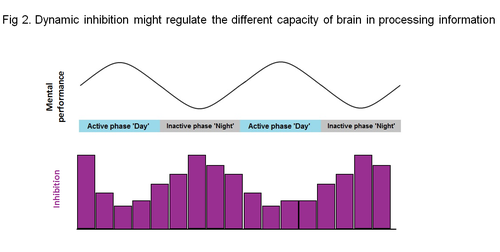Early Career Research: Understanding how the brain performs through day and night, by Dr Hannah Alfonsa
 Dr Hannah Alfonsa, Junior Research Fellow in Pharmacology
Dr Hannah Alfonsa, Junior Research Fellow in Pharmacology
My
research focuses on answering the question, ‘Why does our mental performance
differ depending on the time of day or night?’ To explain this, we need to understand the daily changes that take
place in our brains at the level of individual nerve cells, or neurons, and
groups of neurons.
Understanding the cyclical changes between sleeping and waking states experienced by humans and animals through the day is crucial. During these different states, the brain exhibits distinct patterns of activity and different capacities to learn and process information. However, the mechanisms that underlie these differences are not well understood.
Our brain comprises billions of neurons, each of which communicates with thousands of others. Their signalling mode can be either excitatory or inhibitory, and the delicate balance between the two is what regulates our brain function. Inhibitory signalling between neurons has been shown to be dynamic, and could play an important role in regulating the brain’s capacity for information processing. This is supported by the fact that when inhibitory signalling fails, as found in patients with neurological disorders such as epilepsy, Down syndrome and schizophrenia, the brain’s capacity to learn is disturbed.
My current research is investigating how changes in inhibitory signalling across 24 hour cycles affect the different types of brain activity associated with sleeping and waking states, and how the same changes affect the brain’s capacity to process and store new information (figure 2).
Using an electrophysiology technique called patch-clamping, we are able to insert an electrode into a single neuron and record its activity at different times of day and in different brain states. This allows us to assess the cellular properties of the neurons that regulate inhibitory signalling at a network level. Mapping out these parameters across different times of day will advance our understanding of the cellular processes underpinning diurnal changes, not only in the healthy brain but also where there is disease. The hope is that this will help us to understand why patients with epilepsy, Down syndrome and schizophrenia, for example, often exhibit a combination of cognitive symptoms and disturbances to their sleep.
